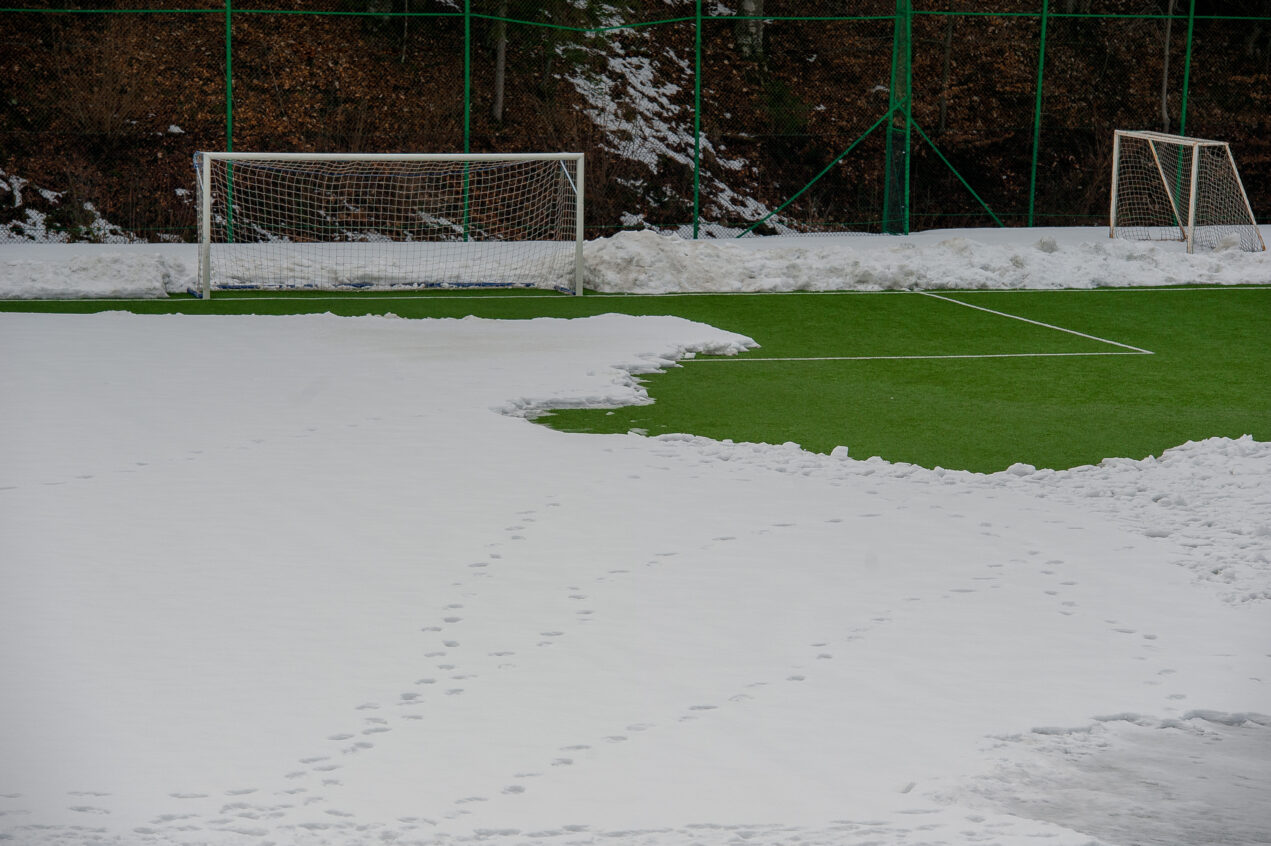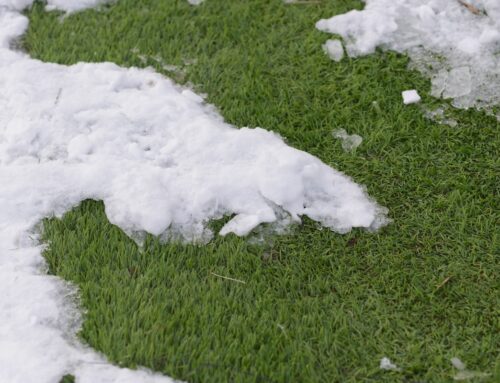Last Updated on December 21, 2024 by ReTurf
Artificial turf has become a popular alternative to natural grass due to its low maintenance, durability, and year-round greenery. However, when winter arrives, many homeowners and facility managers wonder about the best practices for keeping their artificial turf safe and usable during icy or snowy conditions. A common question is whether salt or ice melt can be used to manage icy build-up on artificial turf. The answer, while nuanced, is generally positive—with a few considerations to ensure your turf remains in top condition.
Understanding Artificial Turf and Winter Weather
Artificial turf is designed to withstand a variety of weather conditions, including snow and ice. Modern turf systems are made from durable materials like polyethylene or polypropylene, which resist extreme temperatures and harsh conditions better than natural grass. Additionally, the turf is backed with drainage layers that help meltwater flow away, preventing waterlogging or pooling during winter.
While artificial turf doesn’t require fertilizers, mowing, or the same level of maintenance as natural grass, it can still benefit from some care during the colder months. One aspect of this care involves how to deal with ice and snow accumulation.

Can You Use Salt on Artificial Turf?
The use of salt, particularly rock salt (sodium chloride), is a common method for de-icing surfaces like roads, driveways, and walkways. When it comes to artificial turf, salt can be used sparingly and with some precautions. Here’s why:
- Minimal Risk to Turf Materials: Salt doesn’t inherently damage the synthetic fibers or backing of artificial turf. This makes it a viable option for melting ice in small amounts or specific areas where immediate safety is a concern.
- Effective in Melting Ice: Salt lowers the freezing point of water, making it an efficient and cost-effective way to clear ice. This can be particularly useful if you need the turf to be accessible quickly, such as for a game or an event.
However, it’s important to note that excessive salt use can leave behind a residue. Over time, this residue might build up and alter the appearance of the turf, giving it a dull or dusty look. While this isn’t permanent and can be remedied with a good rinse during warmer weather, it’s something to keep in mind if maintaining the pristine appearance of your turf is a priority.
What About Ice Melt Products?
In addition to salt, ice melt products that combine different chemicals like calcium chloride, magnesium chloride, or potassium chloride are widely used to manage icy conditions. These products can also be used on artificial turf, often with fewer concerns than traditional salt. Here’s why ice melt can be a good choice:
- Gentler on Surfaces: Many ice melt products are formulated to be less abrasive and corrosive than standard rock salt. This means they’re less likely to cause buildup or residue issues on your turf.
- Wide Temperature Range: Some ice melt products work at much lower temperatures than salt, making them more effective during severe cold snaps.
- Safe for Pets and the Environment: Certain ice melt products are specifically labeled as pet- and eco-friendly, reducing concerns about potential harm to animals or surrounding areas.
When using ice melt, it’s always a good idea to check the product label to ensure compatibility with synthetic surfaces. Spreading the product evenly and avoiding over-application will help maintain the longevity and appearance of your artificial turf.

Tips for Using Salt or Ice Melt on Artificial Turf
If you choose to use salt or ice melt on your artificial turf, following a few best practices can ensure optimal results without unnecessary risk:
- Apply Sparingly: Use only as much salt or ice melt as needed to address the icy areas. Overuse can lead to buildup and may require additional cleaning later.
- Rinse Thoroughly: Once the weather warms up, rinse the turf with water to remove any remaining salt or chemical residue. This helps restore its vibrant appearance and keeps the surface fresh.
- Choose High-Quality Products: Opt for products that are pet-safe and eco-friendly. These formulations are generally less harsh and better suited for use on artificial surfaces.
- Use a Plastic Shovel for Snow: Before applying salt or ice melt, clear any snow with a plastic shovel to minimize the amount of de-icing product needed. Avoid metal shovels, as they may damage the turf fibers.
- Monitor High-Traffic Areas: If your turf sees heavy use during the winter, pay extra attention to high-traffic areas to ensure they remain clear and safe.
Alternatives to Salt and Ice Melt
If you prefer to avoid salt or chemicals altogether, there are alternative methods to manage icy conditions on artificial turf. For example:
- Snow Blowers or Brushes: These tools can quickly clear snow without damaging the turf.
- Heated Mats: For smaller areas, heated mats can provide a chemical-free way to prevent ice buildup.
- Sand or Kitty Litter: These can provide traction on icy patches without the potential for residue buildup.
The Bottom Line
Using salt or ice melt on artificial turf is not only possible but also a practical solution for winter maintenance when used responsibly. Artificial turf is built to be resilient and handle a range of conditions, making it a great choice for those seeking an attractive and functional outdoor surface year-round.
By following simple guidelines and choosing quality products, you can keep your artificial turf looking great and ready for use, even during the coldest months. Whether you’re managing a backyard, sports field, or commercial space, winter weather doesn’t have to be a challenge for your turf. With the right approach, it can stay as dependable and inviting as ever.



